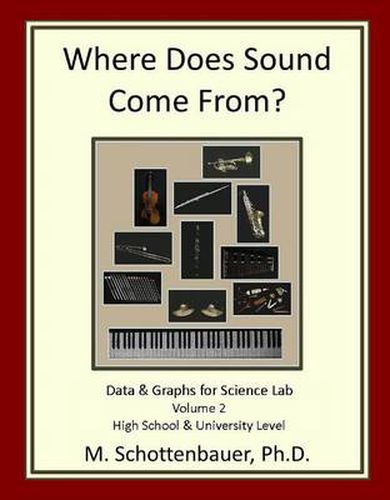Readings Newsletter
Become a Readings Member to make your shopping experience even easier.
Sign in or sign up for free!
You’re not far away from qualifying for FREE standard shipping within Australia
You’ve qualified for FREE standard shipping within Australia
The cart is loading…






In this book, readers gain access to real scientific data pertaining to the science of sound production, promoting graph-reading, comparison, contrast, and calculation skills. Graphs show data from the following scientific instruments: Sound Level Meter and Tuner. The musical instruments in this book include violin, flute, clarinet, saxophone, oboe and bassoon reeds, trumpet, trombone, 5 types of recorders (garklein, sopranino, soprano, alto, tenor, and bass), xylophone, drum pad, cymbals, gong, maracas, guiro, claves, triangle, maracas, wood block, castanets, Tibetan bowl, tuning fork, and voice. Bonus Material: Charts comparing tuning systems, instructions on calculating frequencies for different notes and scales, and derivation of the power series underlying just intonation tuning and scales are included. Pictures of the scientific instruments and musical instruments used in Volumes 1 and 2, sample setup pictures and discussion questions regarding laboratory equipment, and pictures of a comparison hydraulic experiment are also included.
$9.00 standard shipping within Australia
FREE standard shipping within Australia for orders over $100.00
Express & International shipping calculated at checkout
In this book, readers gain access to real scientific data pertaining to the science of sound production, promoting graph-reading, comparison, contrast, and calculation skills. Graphs show data from the following scientific instruments: Sound Level Meter and Tuner. The musical instruments in this book include violin, flute, clarinet, saxophone, oboe and bassoon reeds, trumpet, trombone, 5 types of recorders (garklein, sopranino, soprano, alto, tenor, and bass), xylophone, drum pad, cymbals, gong, maracas, guiro, claves, triangle, maracas, wood block, castanets, Tibetan bowl, tuning fork, and voice. Bonus Material: Charts comparing tuning systems, instructions on calculating frequencies for different notes and scales, and derivation of the power series underlying just intonation tuning and scales are included. Pictures of the scientific instruments and musical instruments used in Volumes 1 and 2, sample setup pictures and discussion questions regarding laboratory equipment, and pictures of a comparison hydraulic experiment are also included.